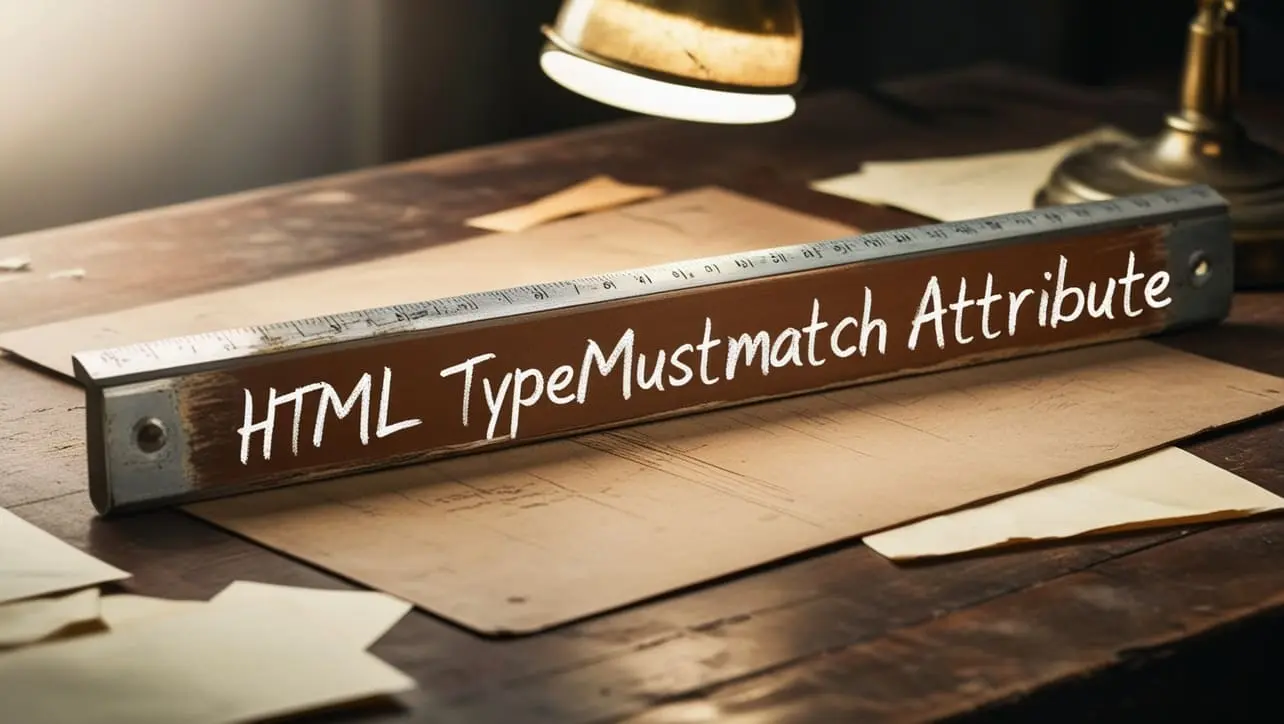
HTML Basic
HTML Reference
- HTML Tags
- HTML Deprecated Tags
- HTML Events
- HTML Attributes
- accept
- accept-charset
- accesskey
- action
- align
- alt
- as
- async
- autocomplete
- autofocus
- autoplay
- bgcolor
- border
- charset
- checked
- cite
- class
- color
- cols
- colspan
- content
- contenteditable
- controls
- coords
- data
- data-*
- datetime
- default
- defer
- dir
- dirname
- disabled
- download
- draggable
- enctype
- enterkeyhint
- for
- form
- formaction
- headers
- height
- hidden
- high
- href
- hreflang
- http-equiv
- id
- inert
- inputmode
- ismap
- kind
- label
- lang
- list
- loop
- low
- max
- maxlength
- media
- method
- min
- multiple
- muted
- name
- novalidate
- onabort
- onafterprint
- onbeforeprint
- onbeforeunload
- onblur
- oncanplay
- oncanplaythrough
- onchange
- onclick
- oncontextmenu
- oncopy
- oncuechange
- oncut
- ondblclick
- ondrag
- ondragend
- ondragenter
- ondragleave
- ondragover
- ondragstart
- ondrop
- ondurationchange
- onemptied
- onended
- onerror
- onfocus
- onhashchange
- oninput
- oninvalid
- onkeydown
- onkeypress
- onkeyup
- onload
- onloadeddata
- onloadedmetadata
- onloadstart
- onmousedown
- onmousemove
- onmouseout
- onmouseover
- onmouseup
- onmousewheel
- onoffline
- ononline
- onpagehide
- onpageshow
- onpaste
- onpause
- onplay
- onplaying
- onpopstate
- onprogress
- onratechange
- onreset
- onresize
- onscroll
- onsearch
- onseeked
- onseeking
- onselect
- onstalled
- onstorage
- onsubmit
- onsuspend
- ontimeupdate
- ontoggle
- onunload
- onvolumechange
- onwaiting
- onwheel
- open
- optimum
- pattern
- placeholder
- popover
- popovertarget
- popovertargetaction
- poster
- preload
- readonly
- rel
- required
- reversed
- rows
- rowspan
- sandbox
- scope
- selected
- shape
- size
- sizes
- span
- spellcheck
- src
- srcdoc
- srclang
- srcset
- start
- step
- style
- tabindex
- target
- title
- translate
- type
- usemap
- value
- width
- wrap
- HTML Global Attributes
- HTML Status Code
- HTML Language Code
- HTML Country Code
- HTML Charset
- MIME Types
HTML typemustmatch Attribute

Photo Credit to CodeToFun
🙋 Introduction
The typemustmatch attribute in HTML is used within the <object> element to ensure that the type of the external resource matches the specified type attribute.
This attribute can be useful for enhancing the security and reliability of embedded resources in your web pages.
🎯 Purpose of typemustmatch
The primary purpose of the typemustmatch attribute is to enforce strict type checking for embedded resources. When this attribute is set, the browser will only load the resource if its type matches the specified type attribute in the <object> tag. This can prevent unintended or malicious content from being loaded.
💎 Values
The typemustmatch attribute is a Boolean attribute, meaning it does not require a value. Its mere presence enforces the type matching. If the attribute is present, the resource must match the specified type; if it is absent, type matching is not enforced.
📄 Implementation Example:
Let's look at a simple example of how to use the typemustmatch attribute in an HTML document:
<object data="example.pdf" type="application/pdf" typemustmatch>
<p>Your browser does not support PDFs. <a href="example.pdf">Download the PDF</a>.</p>
</object>🧠 How it Works
In this example, the typemustmatch attribute ensures that the embedded example.pdf file is only loaded if its MIME type is application/pdf.
🔄 Dynamic Values with JavaScript
You can also dynamically set the typemustmatch attribute using JavaScript. This can be useful when you need to programmatically control the loading of resources based on certain conditions. Here's a brief example:
<script>
// Dynamically set typemustmatch for an object element
document.getElementById("dynamicObject").setAttribute("typemustmatch", "");
</script>
<object id="dynamicObject" data="example.mp4" type="video/mp4">
<p>Your browser does not support videos. <a href="example.mp4">Download the video</a>.</p>
</object>🧠 How it Works
In this script, the typemustmatch attribute is dynamically added to the <object> element with the id "dynamicObject," ensuring that the video file will only load if its type matches video/mp4.
🏆 Best Practices
- Use the
typemustmatchattribute to enhance security by ensuring that only the intended type of resource is loaded. - Combine typemustmatch with other security measures like content security policies (CSP) to further protect your web pages from malicious content.
- Test your implementation across different browsers to ensure consistent behavior, as some older browsers may not fully support this attribute.
🎉 Conclusion
The typemustmatch attribute is a useful feature for ensuring that embedded resources match their specified types. By enforcing this check, you can enhance the security and reliability of your web pages.
Understanding how to use this attribute, both statically and dynamically, allows you to better control the behavior of embedded content in your HTML documents.
👨💻 Join our Community:
Author

For over eight years, I worked as a full-stack web developer. Now, I have chosen my profession as a full-time blogger at codetofun.com.
Buy me a coffee to make codetofun.com free for everyone.
Buy me a Coffee












If you have any doubts regarding this article (HTML typemustmatch Attribute), please comment here. I will help you immediately.